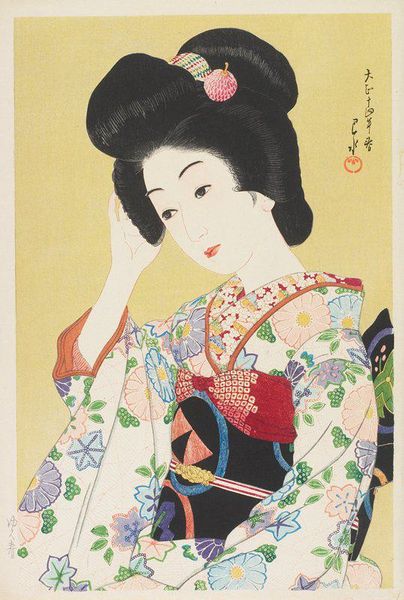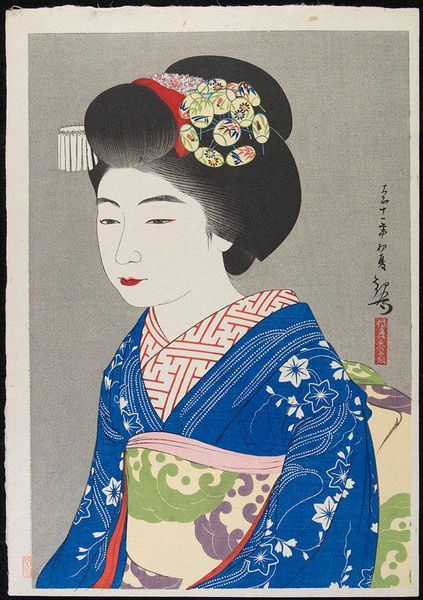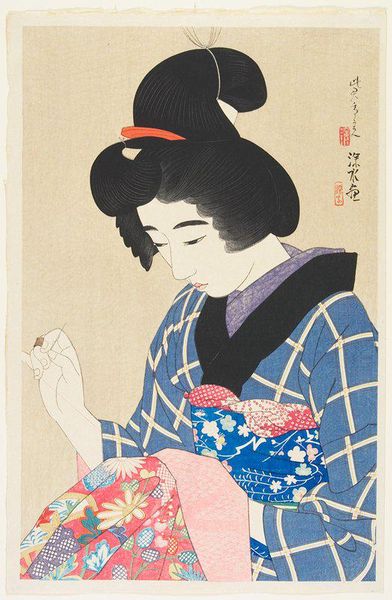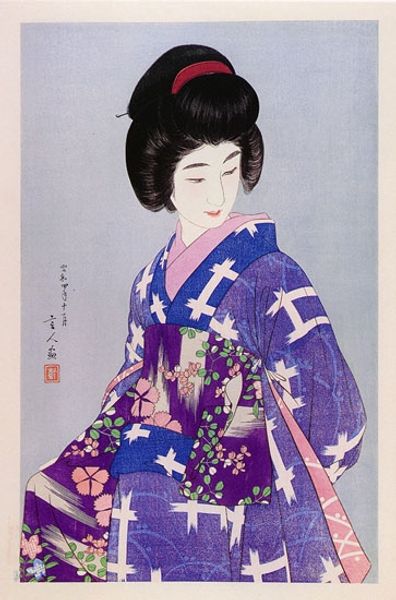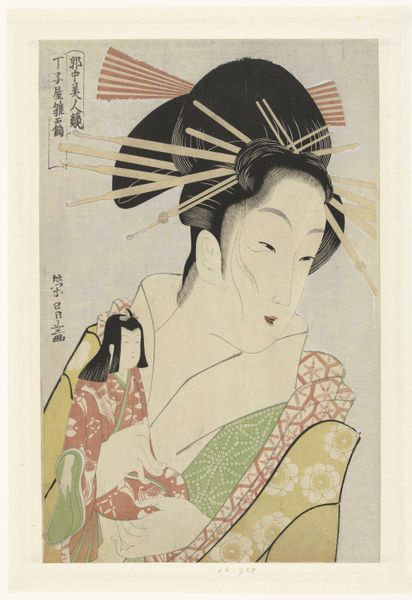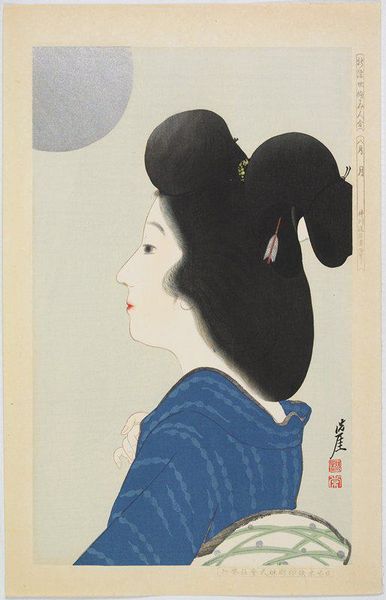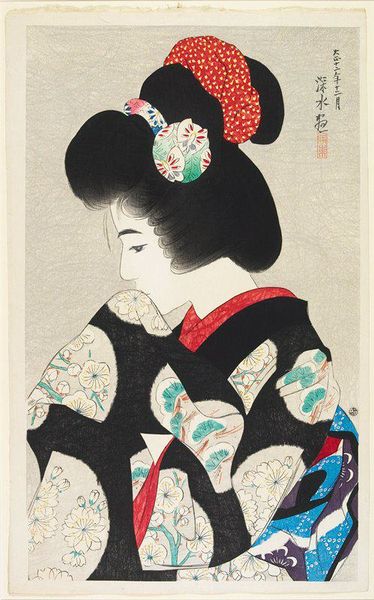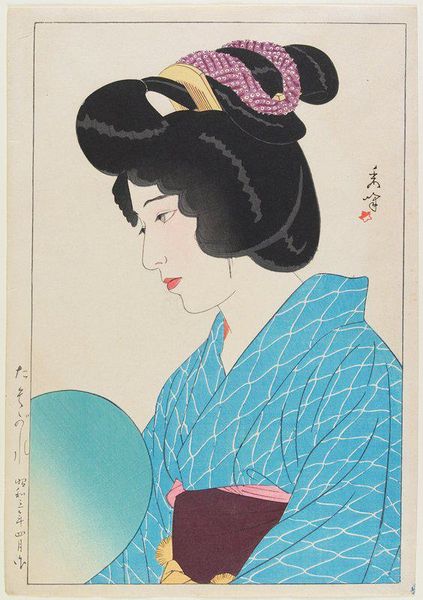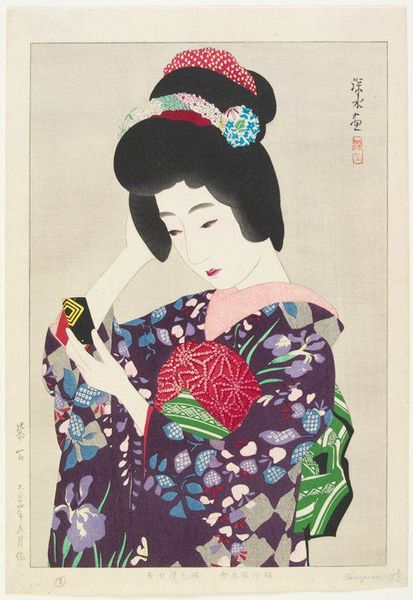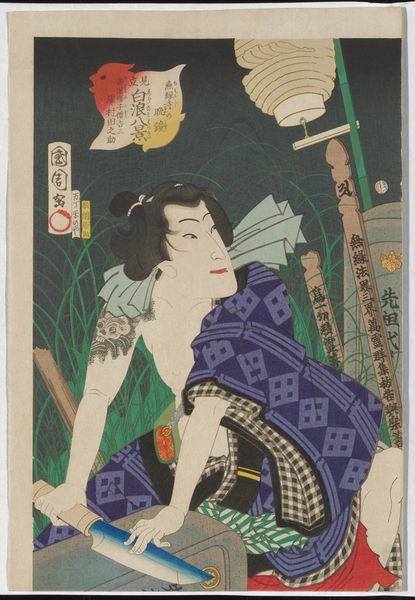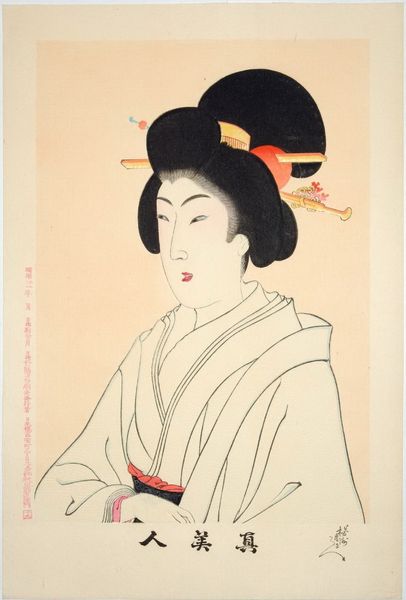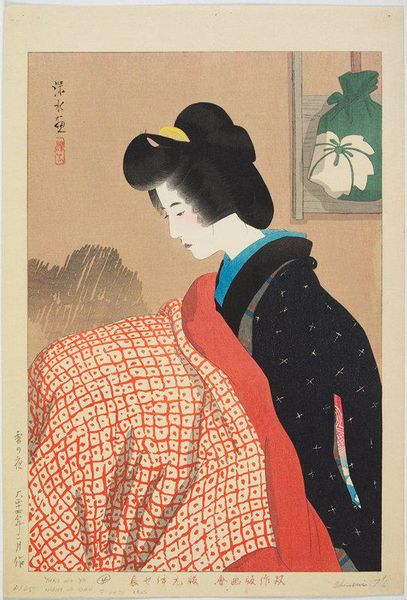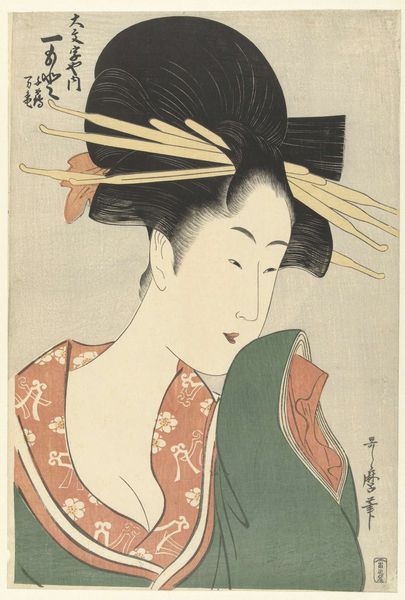
Dimensions: 16 13/16 x 11 5/16 in. (42.7 x 28.73 cm) (plate)
Copyright: No Known Copyright
Curator: This captivating image is "Taking Off Her Socks," a woodblock print by Narita Morikane, created in 1931. It's currently part of the Minneapolis Institute of Art's collection. Editor: It's beautifully composed. The cool blues and grays give it a serene feeling, but then there's a little burst of unexpected avian energy. Those sparrows, or are they swallows, against her robe. Curator: The integration of birds and flowers is a very studied artistic technique of the period. These birds challenge and renegotiate patriarchal modes of representation, becoming part of the subject's freedom. The subtle eroticism connects it to ukiyo-e traditions, reimagining what that imagery could mean for modern Japanese women and global society as they take agency in their own narrative. Editor: Absolutely, this print highlights the labour involved in both production and perhaps the figure's relaxation rituals as she undresses. I'm intrigued by the way the textures are built up through the printmaking process itself – how the layers upon layers of ink, likely applied manually, construct the image and then how we, as consumers of art, engage with this interplay between the subject, and her materiality through layered artistic process. Curator: Right, it is fascinating how she blends traditional Japanese artistic practices with modern themes. The deliberate crafting challenges notions of fixed identity and beauty standards of the era, reflecting on the intersection of self-expression and the historical subjugation of the female form in East Asia. The symbolism extends to discussions of commodification, femininity, the working-class in modern urban environments in postcolonial global society. Editor: What do you make of her expression, so neutral yet inviting? It invites reflection on the human body itself, and our response to its portrayal through process and production methods, each choice in color and materiality is imbued with its own set of relations Curator: It complicates and enriches her portrayal, positioning the act of 'taking off her socks' as less about vulnerability and more about self-possession and cultural commentary. That neutrality almost grants us permission to witness this private moment and connect these historical and artistic contexts, empowering our critical discourse on representation. Editor: Considering the meticulousness of this woodblock and how the birds add movement against a palette dominated by grey, blue, and soft textures is compelling. It highlights the physical demands of production, the careful calibration, the choices of texture against flatness… Curator: Exactly! And placing it within a feminist art history context underscores the challenges that artists like Morikane faced in navigating male-dominated spaces and using art to critique and reimagine prevailing social norms. Editor: Analyzing these layers through a social and historical framework gives a better reading, revealing deeper engagements between image, artist, producer, consumer, materials and audience. Curator: Absolutely. It opens so many avenues to understand both the art and its position within power relations!
Comments
No comments
Be the first to comment and join the conversation on the ultimate creative platform.
